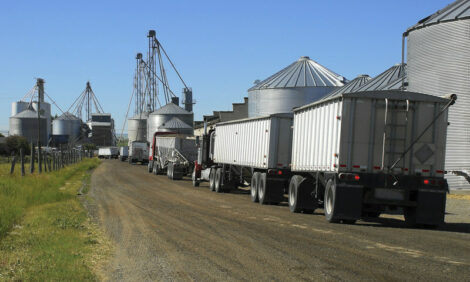



Improving Carcass Yield is Key to Improving Pork Profitability
CANADA - Improving carcass yield is a key factor in improving profitability and competitiveness of pork production, and pork quality is fundamental for a better consumers’ eating experience, writes Chunyan Zhang, PhD, Postdoctoral Fellow, University of Alberta/Genesus.So, improving carcass yield and pork quality are critical to the long term competitiveness of the North American pork industry and meeting worldwide meat protein demands.
There are many measurements to evaluate the carcass yield and meat quality. Usually, the carcass yield traits include hot carcass weight, cold carcass weight, dressing percentage, lean yield, fat depth, loin depth, loin muscle area, primal and trimmed yield. Some of the key meat quality traits include loin pH, colour, drip loss, cooking loss, shear force (a measure of tenderness), and intramuscular fat (IMF).
In practice, the cost of measurement of these traits is very high, and it is difficult to obtain large amounts of data needed to drive improvement. Furthermore, most of these traits are associated with each other and some of these associations are even antagonistic. Therefore genetic improvement of these traits presents challenges.
From a recent large-scale Genesus project focusing on carcass and meat quality improvement, we found that hot carcass weight has high and favorable genetic associations with multiple carcass components, including cold carcass weight, carcass length, loin muscle area and loin depth.
Improving hot carcass weight is also helpful to genetically improve marbling score and IMF. So, hot carcass weight is considered a good indicator for carcass yield. We also confirmed that loin pH is a good indicator for most meat quality traits.
The genetic associations between pH and drip loss, cooking loss, IMF and loin colour are high and favorable, indicating increasing pH could simultaneously improve these traits. However, increasing pH has a potential negative effect on shear force and some carcass yield measures, including hot carcass weight, backfat depth, loin depth and muscle area, which is not desired.
Therefore, simultaneous selection hot carcass weight, pH, backfat depth, loin depth and shear force may be the most effective way to improve pork carcass and quality.
One area of focus for this project was to determine if there were regions of the pig’s genome that affected carcass and meat quality traits. These analyses utilized genomic tools and technology along with the carcass and meat quality data on Genesus commercial pigs to investigate these important traits.
Several significant associations were found and are presently being further investigated. For example, three genomic regions were found to have important effects on hot carcass weight; two regions were identified for peak shear force; four regions were detected for loin muscle area and three regions were associated with backfat depth.
Incorporation of these results along with continual improvement of such genomic technologies will enhance the Genesus genetic improvement program for carcass and meat quality, and consequently enhance the ultimate goal of increasing value and profitability for Genesus’ customers.
References:
Miar Y., et al. 2014. JAS 92: 2869-2884; Miar Y., et al. 2014. PLoS ONE 9(10): e110105.









